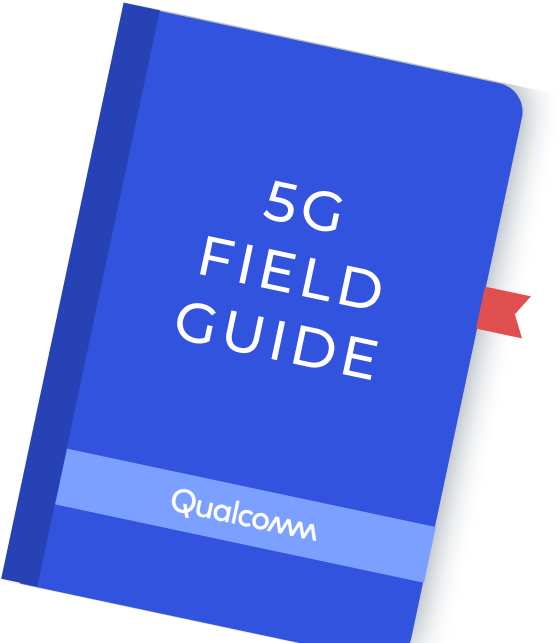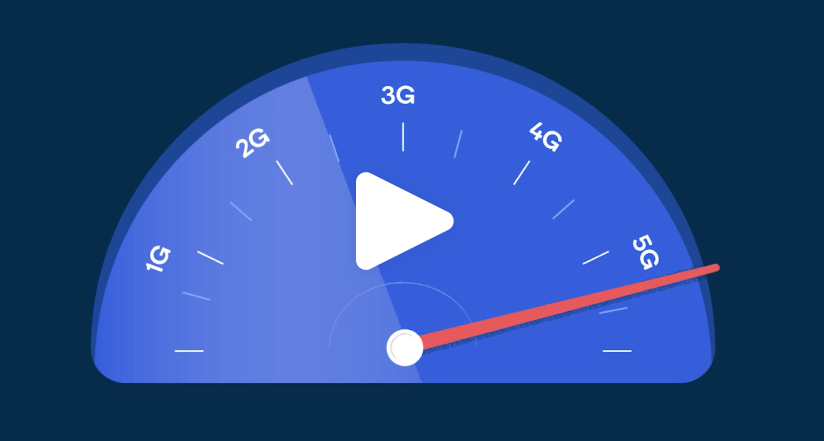Chapter 1:
Why We Really Need Another G
Your smartphone and other devices send and receive data using specific frequencies on the radio frequency spectrum. Once upon a time (on 4G) some engineers thought they reached the max limit of what was mathematically possible for transmitting cellular data. But not our Qualcomm engineers. Why? Because they’re skilled at solving the impossible.
Qualcomm engineers thought that society’s unique challenges - like the need to provide health care in remote regions - could be solved by providing the world faster and more reliable mobile connections. We did it by using never-before used frequencies known as mmWave (more about that later). It took a whole decade of hard work and more than $65 Billion* in research and development. Is that a lot of money and time? Yes. Was it worth it? You bet your Massive MIMO it was. Okay, enough of the tech talk. Let’s talk economics.
*Total R&D spend through Q4 2020Chapter 2:
Let’s Hear it for Economic Impact
Over the next 5 years, 5G will have a major impact on the U.S. economy:
- Driving up to $2.7 trillion in additional gross output (sales) growth.
- Adding up to $1.5 trillion to the U.S. GDP -- more than the economy of Australia!
- Creating or transforming up to 16 million jobs in the U.S.
That basically puts 5G on the same level of importance as the printing press and electricity. Not bad company.
Chapter 3:
Leading the Way
From the beginning, we knew the importance of the U.S. being a 5G leader.
The country that wins the race to 5G could secure more than a decade of competitive advantage. The U.S. has traditionally been a global leader in wireless technology, but we’re not the only ones with ambitions.
Only one U.S. company has been leading 5G R&D and contributing to global standards. That’s Qualcomm.
Because that’s what leaders do. They carve a path where there is none. Plus, we love a good competition!
Chapter 4:
The Power of 5G
Bye-Bye “Lag Time”
“Lag Time” is often referred to as “Latency”, which is something you won’t have to worry about with 5G. Data can now travel almost instantaneously. Autonomous vehicles, cloud-based work collaboration, and virtual reality all benefit from ultra low-latency.
Lightning-Fast Speeds
5G is up to 10 times faster than 4G. Sounds fast, right? That’s because it is. Now you can stream 8K video, experience immersive learning, add countless applications that don’t even exist yet, and even save lives. This type of speed is beyond comprehension. Literally mind-blowing.
100x More Capacity
5G gives you more network capacity and a lot more bandwidth. Thanks to our Massive MIMO and mmWave technologies, 5G can handle 100 times more traffic than 4G -- enabling billions of devices to connect, even some that haven’t been invented yet.
Chapter 5:
Anywhere and Everywhere
5G isn’t only for city dwellers. That’s because 5G can deliver streaming speeds of more than 200Mbps for more than 3 miles - and this is 5G just getting started! Unfortunately, some communities have been unable to experience all of the “G’s”. The connectivity divide is real. However, Qualcomm is helping to bridge the gap with 5G. We believe everyone should have access regardless of their location or economic status. For example, with Fixed Wireless Access (FWA) customers and business owners can have permanently installed 5G hotspots on their roofs and outside their businesses—delivering fiber-like internet to all the devices inside, even outside the city limits.
Chapter 6:
From 1G to 5G
A Wireless Timeline in Real Time
Chapter 9:
So, What’s a mmWave?
You might have heard of mmWave by now. The mm stands for “millimeter”. The Qualcomm engineers behind 5G cracked the code on how to utilize this section of radio frequency spectrum in a way that allows the network to handle 100x more data than 4G, faster and more reliably.
Everyone thought it was impossible. Turns out, it wasn’t. Let’s hear it for Qualcomm’s engineers and mmWave!
Chapter 10:
Massive MIMO. Talk About a Big Deal.
MIMO (pronounced MY-MO) stands for Multiple Input Multiple Output (MIMO). The “Massive” part has to do with the fact that MIMO allows each 5G base station to handle literally dozens more antennas than previous stations.
Each of these antennas send out hyper-precise signals that bounce from base station to base station without interruption or interference, increasing network connectivity and reliability. Make sense?
Chapter 12:
Privacy, Security, Safety
5G was designed with improved security and privacy protections. These enhancements include better data encryption, privacy mechanisms and "network slicing," which enables protections for specific portions of the network.
This means industries like automotive, healthcare, and energy can use 5G to better safeguard sensitive data.
Ensuring the security of wireless ecosystems isn’t easy. Though 5G is paving the way for better protected data by providing wireless networks with heightened security and privacy features. This will enable the expansion of critical services while better protecting your data.
Perhaps most importantly, the FCC requires that all wireless devices sold in the United States meet certain safety guidelines. We design our products to meet regulations and work with other companies and international organizations to keep products safe.
Chapter 13:
Inventing for a Better Tomorrow

This may be the end of our 5G Field Guide, but it’s just the beginning of the 5G story.
5G has arrived in cities across the world and is beginning to transform the way we live, work, and communicate.
Many of us have heard about the impact 5G is making on industries such as agriculture, healthcare, education and more. Developments brought about as a result of 5G will improve the lives of people around the world.
Imagine connected farming devices that can immediately detect when crops need water and fertilization, students immersively learning through virtual reality, medical devices that track chronic illness without the need for an office visit, the potential is unlimited. 4G gave us the ability to stream in HD and gave rise to new industries like ridesharing.
What will 5G bring us? Only time will tell.
5G Real-Time
As 5G continues to expand and evolve, find the most current news and roll-out information at 5G Today.








